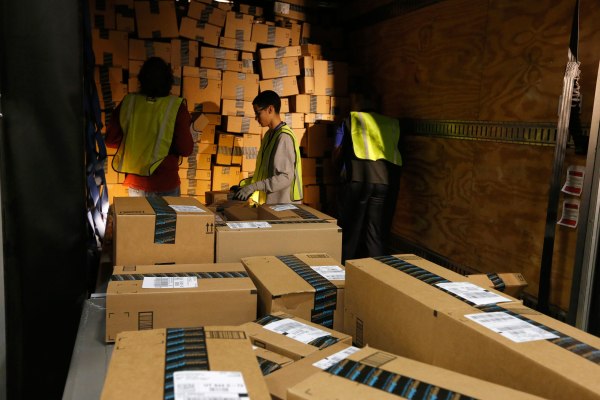Yesterday’s Cyber Monday sales event was already poised to break records with a forecasted $3 billion in sales, making it the largest online sales day in U.S. history. It ended up beating those estimates, however, according to the final numbers provided by Adobe’s Digital Index today: the company says that $3.07 billion was spent online yesterday, a 16 percent increase year-over-year, and 3.2 percent higher than its earlier predictions.
Also notable, 26 percent of sales ($799 million) were made from mobile devices this year.
Mobile has played a larger role than ever during this busy holiday shopping season. For instance, though Walmart.com won’t break out its mobile sales figures by day, it did say that during the five-day stretch from Thanksgiving through Cyber Monday, nearly half of online orders were placed using mobile devices – that’s double what the retailer saw just last year, we’re told.
In addition, mobile accounted for a whopping 70 percent of Walmart.com’s online traffic.
Those numbers are staggering when you stop and think about it, even if Walmart is something of an outlier when it compared with the average. But it does indicate a growing shift in the way consumers are shopping on mobile devices.
Before, mobile users would tend to search for products, do research, and browse while using their smartphones or tablets, but now they’re actually placing items in their cart and completing checkouts at a much higher rate than before.
In terms of mobile metrics, Adobe further broke down mobile spending on Cyber Monday, noting that more of the overall $799 million in mobile sales was generated by people using iOS devices. That is, $575 million came from iOS users while just $219 million came from Android devices. (Those figures also explain why e-commerce retailers and startups tend to release their native shopping apps on iOS first.)
Adobe also told us that both Cyber Monday visits and sales from mobile devices were up 8 percent year-over-year.
According to Adobe, the record-breaking Cyber Monday saw higher than expected discounts, which also contributed to high sales volume. Discounts averaged 21.5 percent, the firm found, which led to a number of top products going out-of-stock as the day progressed.
14 out of 100 product views saw an out-of-stock message on Cyber Monday, which is nearly two-and-a-half times the normal rate. Top sellers this year included toys like Barbie Dream House, Shopkins, Lego Star Wars, Lego City, and Lego Dimensions. Meanwhile, electronics like the Samsung 4k, iPad Mini, Xbox, iPad Air 2, and PS4 were also favored among shoppers.
With the surge of traffic sent to online stores this year, not all retailers were able to handle the load. Neiman Marcus’ website crashed on Black Friday, forcing them to have a “Black Saturday” sale instead, but even then continued to face availability issues. Target also had to meter out traffic to its site to manage the influx of online shoppers, which led to many shoppers seeing error messages when they visited the site. Even PayPal struggled at times yesterday.
Catchpoint Systems, which was tracking site availability on Cyber Monday, also noted that other sites experienced problems throughout the day and in some cases the weekend, too, including HP, Newegg, Saks, Jet.com, Victoria’s Secret, Foot Locker and Shutterfly, to name a few.
Adobe’s numbers are based on aggregated and anonymous data from 200 million visits to 4,500 retail websites on Cyber Monday. The company measures 80% of all online transactions from the top 100 U.S. retailers through Adobe Marketing Cloud.
But not all retailers are willing to share their Cyber Monday sales metrics, including how they compare year-over-year, or what percentage came from mobile. Amazon, for instance, won the award for sharing the vaguest Cyber Monday sales data yet.
Target, meanwhile, declined to speak in specifics about its sales or visitor counts, only touting that (despite the site issues), Target.com had a record day. Early in the day, orders came in twice as fast as its previous busiest day ever, the retailer said, and by early evening, it had beaten its previous record for online sales.
Now imagine what it could have done if everyone who visited Target.com yesterday was actually able to shop?
